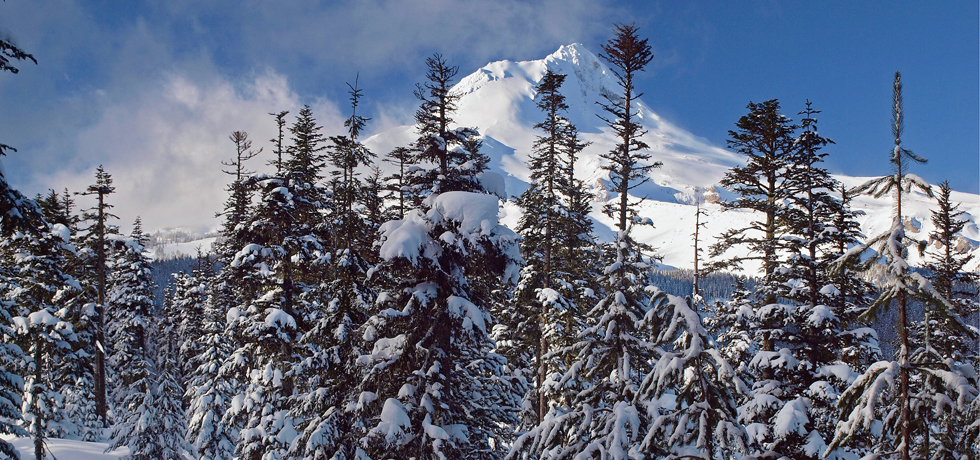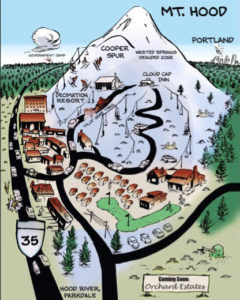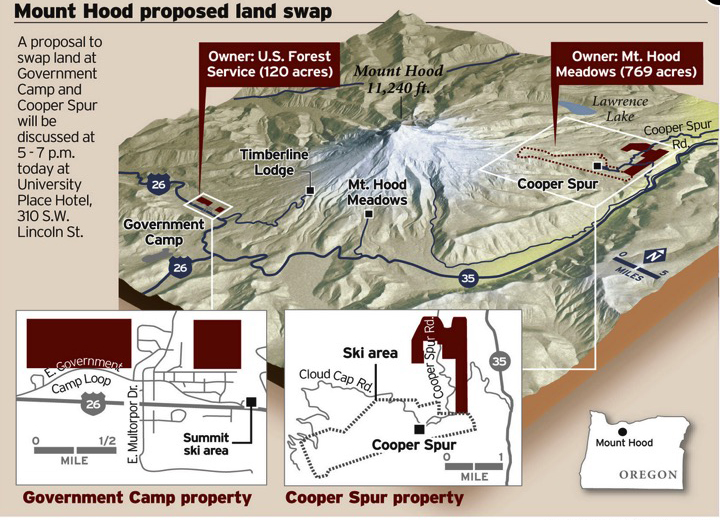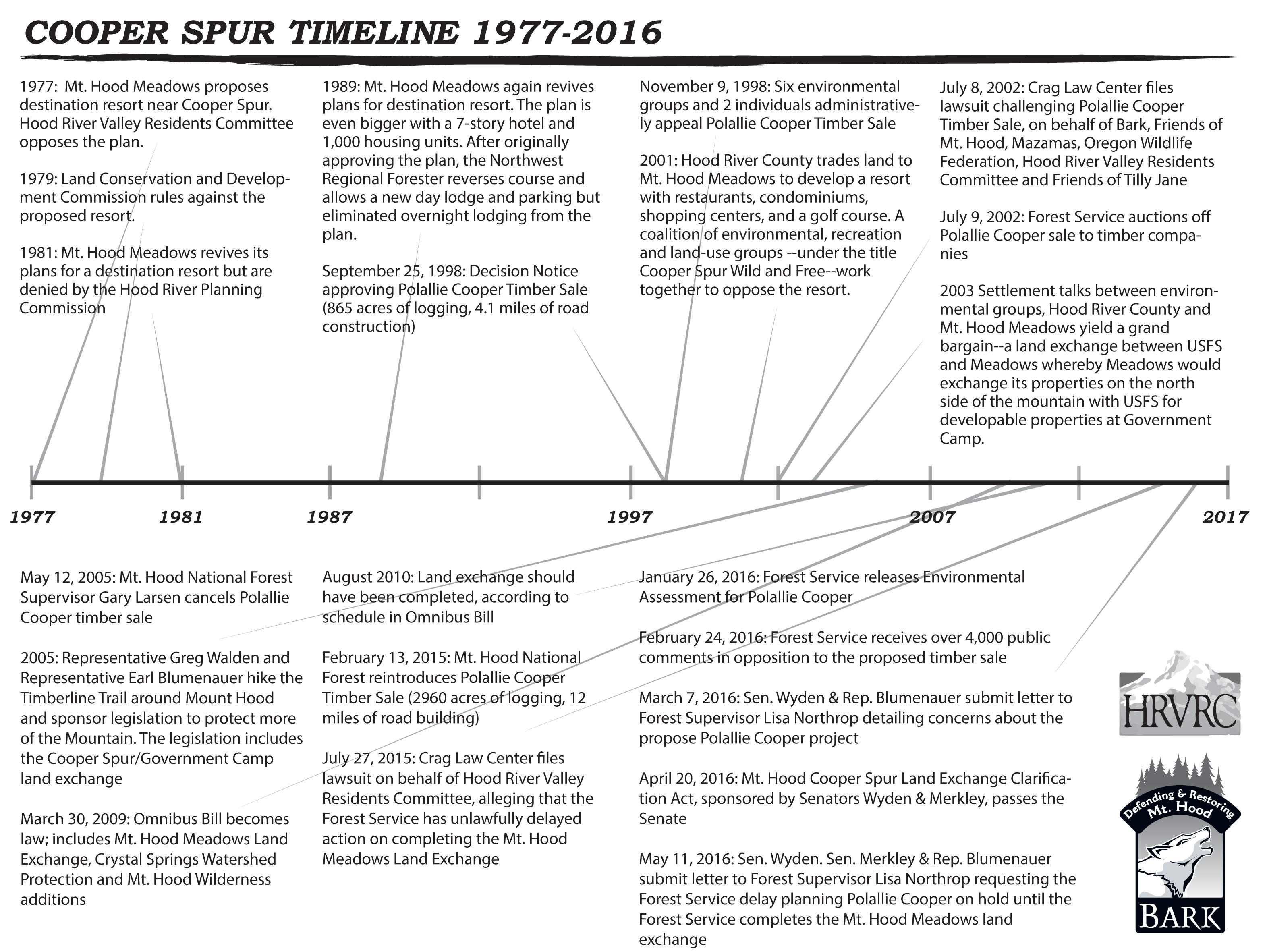
Mt Hood Land Trade
Land Trade Background

The Mount Hood Land Trade (aka the Government Camp-Cooper Spur Land Exchange) is Thrive’s longest running project. It started nearly twenty years ago back when our organization had just barely formed under the banner Hood River Valley Residents Committee (HRVRC). Mt. Hood Meadows LLC had tried to locate a giant destination resort with hundreds of condos, shopping malls, restaurants and golf courses just outside the Parkdale backdoor of our founder Kate McCarthy. The controversial proposal galvanized her, our young organization, conservation groups and the local community in opposition.

From this rancorous beginning, a grand solution emerged. Through citizen action, hard work and collaboration between Thrive, Mt. Hood Meadows, Hood River and Clackamas counties, Oregon’s congressional delegation, and a myriad of conservation groups including the 13 member groups of Cooper Spur Wild and Free, the parties crafted an innovative solution dubbed the “Clean Sweep”, a land exchange that would permanently protect the north side of Mount Hood. Here is a detailed history of the twists and turns of the deal.
The deal was codified by an Act of Congress in 2009. Mt. Hood Meadows would give up its 770 acres on the north side of the mountain in exchange for 120 acres of developable land in Government Camp owned by the US Forest Service. The trade would also give Wilderness designation to thousands of pristine backcountry acres around the historic Tilly Jane trail and protect Hood River’s drinking water in the Crystal Springs Watershed.

Trade Status 2021
Unfortunately, the 2009 Act was not the end of the story. Completing the trade between the Forest Service and Mt. Hood Meadows has been frustratingly slow—twelve years and counting —and has reached a critical juncture that threatens the purpose of the deal crafted with such effort.
The Forest Service and Mt. Hood Meadows recently unveiled new plans for the trade and they are far from the “Clean Sweep” envisioned by Oregon’s congressional delegation and the public. You can read all about it in a piece in The Oregonian. Instead of trading all their 764-acre holding near Cooper Spur, Mt. Hood Meadows deal with USFS now allows them to keep 160 acres for future development at Cooper Spur as well as obtain 67 acres of highly valuable land at Government Camp. To enable this sweetheart deal, USFS relied on appraisals that grossly underestimate the value of the public’s land at Government Camp. Their Alabama-based appraiser valued lots in the heart of Govy at just $26,000 each when lots are currently selling for $250,000 and up.
By bypassing the “Clean Sweep” and instead keeping substantial holdings at Cooper Spur, this deal will allow Mt. Hood Meadows to take another run at destination resort development, an outcome that would undermine the very purpose of the land trade and not provide full value to the American public for the land it owns at Government Camp.
- 1,700 acres of new Wilderness in the Tilly Jane-Cloud Cap Historic District
- Special protections for 2,000 acres in Crystal Springs Watershed – the drinking water supply for 25% of Hood River homes
- A win-win solution that ends a 40-year fight over Mt. Hood Meadows’ plans to develop a destination resort at Cooper Spur.
Cooper Spur Clarification Act of 2018
In 2017, U.S. Senators Ron Wyden, D-Ore., and Jeff Merkley, D-Ore., and Representatives Greg Walden, R-Ore., and Earl Blumenauer, D-Ore., co-sponsored “Fix-It” legislation intended to streamline the trade process after US Forest Service makes little progress towards completing the trade. President Trump signs the act into law in January 2018.
“At long last, the Mt. Hood community will have the development and preservation my colleagues and I have been pushing for,” Merkley said. “This bill will help to preserve unique and beautiful wilderness areas on Mt. Hood while also creating new economic opportunities in the surrounding community.”“I’m proud to have worked with my colleagues on both sides of the aisle and in both houses of Congress to put this long overdue land exchange in the history books,” Wyden said. “Our soon-to-be-law closes this frustrating chapter of Mt. Hood’s past and makes it possible for the local community to finally go forward with wilderness protections and responsible development so wildlife and visitors can enjoy Mt. Hood far into the future.”
“Completing the Cooper Spur land exchange is key to protecting Crystal Springs, the water source for the City of Hood River and the upper Hood River Valley, while also encouraging economic and job growth around Mt. Hood,” Walden said. “These communities have waited nearly nine years for the Forest Service to complete the exchange Congress gave them 16 months to finish. This is long past due and I look forward to President Trump signing this bill into law so the job can finally get done.”
“The land exchange is the culmination of years of work to protect important habitat and recreational opportunities on Mt. Hood,” Blumenauer said. “This legislation is important for the future of the mountain, and I welcome its passage.”
The Forest Service is currently conducting appraisals of the trade properties. The last piece of the puzzle is for the Forest Service and Mt Hood Meadows to agree on the final details of the land exchange to equalize the values. This legislation provides additional tools and sideboards to ensure that the north side of Mt. Hood is fully protected as always intended and that Mt. Hood Meadows focuses new development in Government Camp. The results of the appraisals should be complete in early 2019.
Here is a more detailed history of the twists and turns of the Mt. Hood Land Trade.
